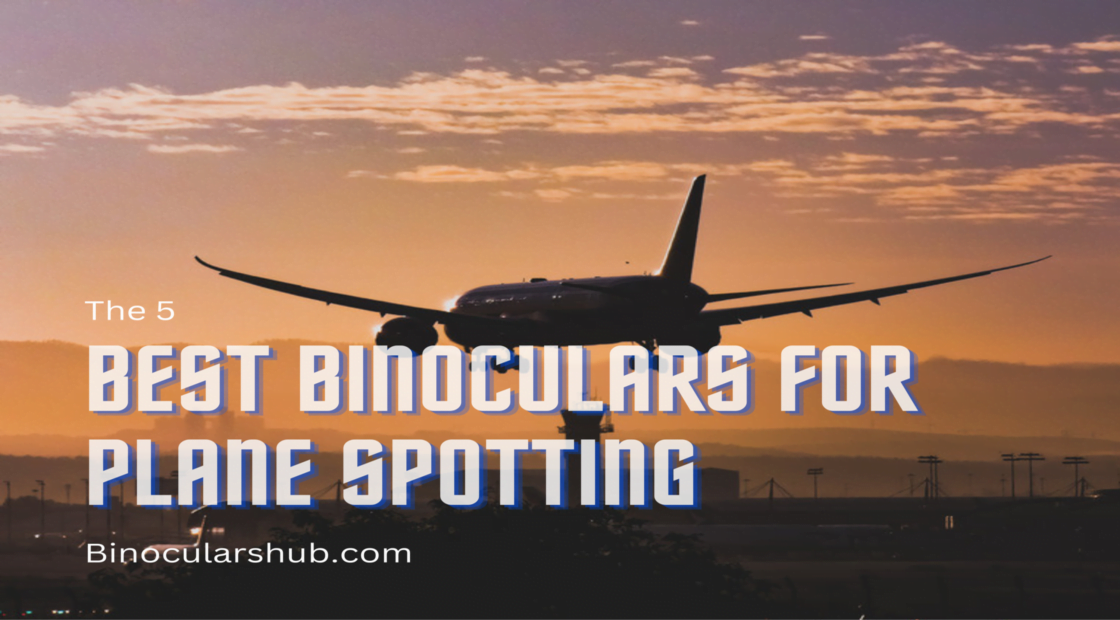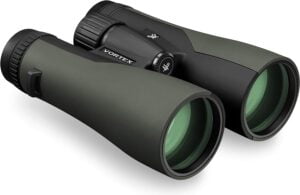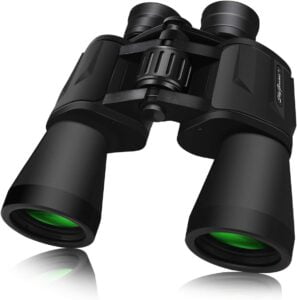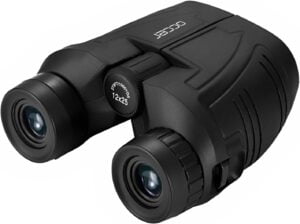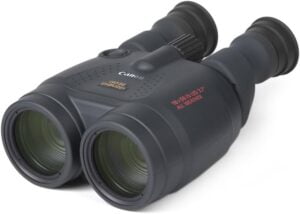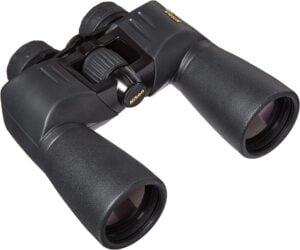This guide will focus on the best binoculars for plane spotting with regard to magnification, objective diameter, prism type, image stabilization, FOV, size, and weight. As an aviation enthusiast, I love watching planes taking off and land. Binoculars, regardless of whether you are a dedicated plane spotter or a beginner, will improve your viewing experience and give you clear images of planes and their features.
Features to Look For in Binoculars for Plane Spotting
Magnification
When it comes to plane spotting binoculars, one of the most critical things to take into consideration is magnification. The greater the zoom, the nearer you can see the aircraft and with more detail. However, it’s crucial to find a compromise since it might lead to a smaller field of vision and more picture-shaking. The best binoculars for plane spotting have a 10x or 12x magnification because they provide the best balance between zoom and stability. Higher magnifications of 16x are great for viewing high flying planes, but it is recommended anything 18x or greater be used with a tripod. At greater magnifications it can be difficult to focus on fast moving planes, at which point are much more suited to star gazing.
Objective Lens Diameter
Binocular objective lens diameter measures how much light goes into the binoculars, which determines how bright and clear the image is. Big objective lenses transfer more light, which means that pictures are brighter and clearer. For good plane spotting, an objective lens size of fifty millimeters or upwards is recommended, as it should provide good light even under low light conditions.
Prism Type
Binoculars for plane spotting generally come in two prism types: roof prism and porro prism. Because the roof prism binoculars are lighter and more portable, they can be easily taken on trips. However, porro prism binoculars provide higher optical quality and a larger field of view. While considering the types of prisms, always ensure you consider what matters most to you, as you may feel that viewing a wide area can help you see a plane flying past quickly.
Image Stabilization
It is paramount to remain still while looking at a plane in the air because an inch of motion is enough to distort one’s observation. For this reason, it is critical to select binoculars with image stabilization. Image stabilization accounts for hand movements, keeping the field of view steady. This is especially helpful when watching aircraft from afar or in turbulent weather. For this reason, a trustable system of changing focus must be available with a speed to follow the flights and keep a clear view. Ensure that you choose binoculars featuring a smooth and accurate focusing mechanism that is easy and quick to use.
Field of View and Exit Pupil
Another important consideration for binoculars for plane spotting is the field of view. It is easier to scan the skies and find aircraft in a wider field of view. Wide field of view binoculars is preferred, which should be in the range of over 300 feet at 1000 yards.
Exit pupil size is important for comfortable viewing, especially in low-light conditions. By dividing the lens diameter by the magnification power you get the size of the exit pupil. When plane spotting, a larger exit pupil of around 7 – 5 mm with give a nice bright and clear picture even in low light conditions.
Weight and Size
Comfort is a major concern in plane spotting, as well as the ability to carry your binoculars from one location to another. Whether you use a binocular strap or harness, go for lightweight and portable binoculars since you might have to walk with these devices over longer distances or travel from one viewing site to another. Opt for durable but lightweight materials such as magnesium alloy and polycarbonate.
Durability and Waterproofing
Your plane spotting binoculars are bound to suffer different types of weather, as well as harsh treatment during plane spotting escapades. Hence, durability is a feature that should be carefully considered. Choose strong but light magnesium alloy and polycarbonate binoculars. They provide strong shock resistance and avoid breakage even when you accidentally drop them.
Waterproof and fog proof binoculars guarantee durability and utility in any circumstance. These binoculars are designed in such a way that moisture does not get through them and thereby damage their internal parts. As a result, your binoculars will stay dry and provide you with a continuous and clear view of planes long into the future.
The 5 Best Binoculars for Plane Spotting Reviewed In This Guide
1. 12×50 Vortex Optics Crossfire HD Binoculars
The 12×50 Vortex Optics Crossfire HD binoculars are among the industry’s best in optics and durable material. These binoculars provide a good zoom-to-brightness balance with 12x magnification and 50mm objective lens. The high definition optical system gives bright and crispy pictures, and the rubber armor covering adds grip as well as resistance to shocks. A wide field of view helps in effective tracking and makes these binoculars a reliable option for plane spotting. Nonetheless, some customers might regard them as a little heavy when compared with what other manufacturers sell.
What We Like
- Excellent image quality
- High magnification
- Wide field of view
- Rugged and durable
- Lightweight and compact
- Affordable price
What We Don’t Like
- Weaker transmission
- Chromatic aberration
- Heavy weight
2. SkyGenius 10×50 Binoculars
Plane spotters who search for superior image quality should consider having the 10×50 SkyGenius binoculars. With 10x magnification and a 50 mm objective lens, they are the brightest binoculars to view aircraft details. The wide FOV makes it relatively easy to track and capture aviation action. They also have a strong body with a rubber armor coating for a firm but a comfortable grip, as well as water and fog resistance. However, they can be a bit too bulky and heavy for continuous use for some users.
What We Like
- High magnification
- Large objective lens diameter
- Large field of view
- Professional-grade features
What We Don’t Like
- More expensive
- Slightly bulky and heavy
- Can be difficult to hold steady, especially in low-light conditions
3. Occer 12×25 Compact Binoculars
The Occer 12×25 compact binoculars are good plane spotter companions for on-the-go people. These binoculars are lightweight and very portable with a magnification of 12x and 25mm diameter of objective lens. The high quality BAK-4 prism and multi-coated lenses allow seeing the image clearly and distinctly, even in a dim light. They are small in size and foldable, which makes them ideal for travel and impromptu adventures. Nevertheless, the relatively small size of this lens could make the image somewhat dimmer when compared to that obtained by larger binoculars.
What We Like
- Compact and lightweight
- Powerful magnification
- Wide field of view
- Clear low-light vision
- Durable construction
- Affordable price
What We Don’t Like
- Some reports of chromatic aberration, or color fringing, around the edges of the image.
- Restrictive interpupillary distance range, making them less comfortable for people with wide or narrow set eyes.
4. Canon 18X50 Image Stabilization All Weather Binoculars
Canon has built a strong brand name with its image stabilization technology and Canon 18X50 binoculars are no exception. With magnification of up to 18x, and a 50 mm objective lens, these binoculars provide a powerful zoom and bright images. They have a built-in image stabilization system that provides steady views even at high magnification, making them perfect tools for high flying plane spotting. Additionally, the strong structure and easy-to-use grip heighten consumer satisfaction. However, the image stabilizing feature results in a premium price tag. It’s also recommended to be used with a tripod to better visualised planes on the move.
What We Like
- High magnification
- Image stabilization
- Wide field of view
- Sharp optics
- Durable construction
What We Don’t Like
- Heavy and bulky
- Shorter eye relief, which requires closer proximity to the eye stem to experience the full FOV
- Limited depth of field
- Expensive
5. Nikon Action EX 16X50 CF Binoculars
The plane spotter looking for extreme performance and reliability should try the Nikon Action EX 16X50 CF binoculars. These are powerful binoculars with a magnification of 16X and a 50mm objective lens diameter for clear images. Multi-coated lenses and quality prisms provide superb optical performance that gives a crystal clear look at the aircraft. The body is rugged and has a rubber armor coating that makes them safe for shock absorption and comfortable to hold on to. On the other hand, the higher magnification translates into a narrower field of view than that of the lower-power binoculars.
What We Like
- Bright, clear optics
- High magnification
- Wide field of view
- Long eye relief
- Rugged construction
What We Don’t Like
- High magnification can lead to an unstable image
- Heavy weight
- Not ideal for twilight viewing
Types of Binoculars for Plane Spotting
Standard Binoculars
Standard build binoculars have a wide price category and a lot of applications. They are suitable for beginners as well as experts at plane watching since they offer good magnification while maintaining a wider focal plane. Normal binoculars vary in magnification from 8-12x with objective lens diameters of 40-50mm.
Compact Binoculars
Compact binoculars are preferable in case portability is a paramount matter. They are also portable and suitable for use by travellers or people who frequently shift their spotting positions. Compact binoculars tend to be equipped with smaller objective diameters, such as 25mm to 32mm and lower magnifications like 8x to 10x. Despite the compromise in some image brightness and stability, their convenience and compactness make you plane spotting experience very enjoyable.
Zoom Binoculars
Zoom binoculars give you variable magnification power so you can zoom in and zoom out as much as you want. This flexibility can be useful in different spotting conditions, whether spotting for a plane at different distances or tracking an airplane during take-off and landing. However, it should be remembered that zoom binoculars have less optical quality and a smaller field of view compared with fixed-magnification ones.
Image Stabilized Binoculars
Image stabilized binoculars are suitable for those who value stability and visual clarity. The latest technology is employed in these binoculars to reduce handshakes to give a clear view even at high magnifications. Although image stabilized binoculars are costly, they may greatly improve the plane spotting experience, especially to capture complicated elements.
Roof Prism Binoculars
Roof prism binoculars are compact and lightweight, therefore making them favorable when flying in the air. These have a straight-through design, giving them a slim and ergonomic shape. However, roof prism binoculars are more bulky and less portable than porro prism binoculars of comparable quality. Consequently, they are usually more costly but are preferred by most plane spotters because of their convenience.
Porro Prism Binoculars
Porro prism binoculars have better optical quality and wider field of view. These have the offset prism configuration and thus are bigger in comparison to the roof prism binoculars. Porro prism binoculars provide more light transmission and depth of view; hence, they are more preferred by plane spotters who value image quality.
Common Questions About Binoculars for Plane Spotting
What binoculars are good for plane spotting?
In selecting a pair of binoculars for plane spotting, one should factor in the magnification, objective lens diameter, prism type, image stabilization, field of view, weight, and size. Plane spotters should select binoculars with an acceptable combination of zoom and stability, a large field of view for easier tracking, and are lightweight and highly portable.
What is the best magnification for plane spotting?
Magnification is better determined by several criteria, such as your likes and the conditions. Generally, the plane spotting should be 10x to 12x magnification, which strikes a balance between zooming and stability. At higher magnifications, the field of view becomes narrow, and the image shake increases, making tracking of aircraft less effective. For higher flying aircraft x16 magnification may be suitable, but any greater would not be recommended without a tripod and would be difficult to master.
Do binoculars work on a plane?
Yes, you can take binoculars with you for viewing purposes, even when on a plane. Nonetheless, airline regulations and guidelines must be observed when using electronic devices and personal belongings on board. The selection of which binoculars work on a plane should also consider aspects like magnitude, dimension, weight, and transportability to ensure convenience during travel.
Can you use binoculars instead of a spotting scope?
While the binoculars can indeed serve as important equipment for plane spotting, they cannot fully take the place of the spotting scope. Spotting scopes usually have high magnification and good image quality; thus, they are recommended for observing aircraft at a distance. However, more convenient and mobile options are binoculars, which make them more versatile in different viewing locations.
What is the difference between 8×42 and 10×50 binoculars?
The figures in the binocular specification denote the magnification and objective diameter of the lens. The magnifications of 8×42 and 10×50 binoculars are 8 and 10, and the objective lens diameters are 42mm and 50mm. 10×50 binoculars offer more zoom; however, they are heavier and bulkier than the 8×42 binoculars.
Conclusion
The right kind of binoculars can help immensely in plane spotting and will enable you to view planes up close. The 5 best binoculars for plane spotting reviewed in this guide have diverse characteristics, enabling you to select the binoculars best suited to your tastes. No matter if you are an experienced plane spotter or just a beginner, buying a quality pair of binoculars, will surely improve your aircraft viewing experience. Happy spotting!

